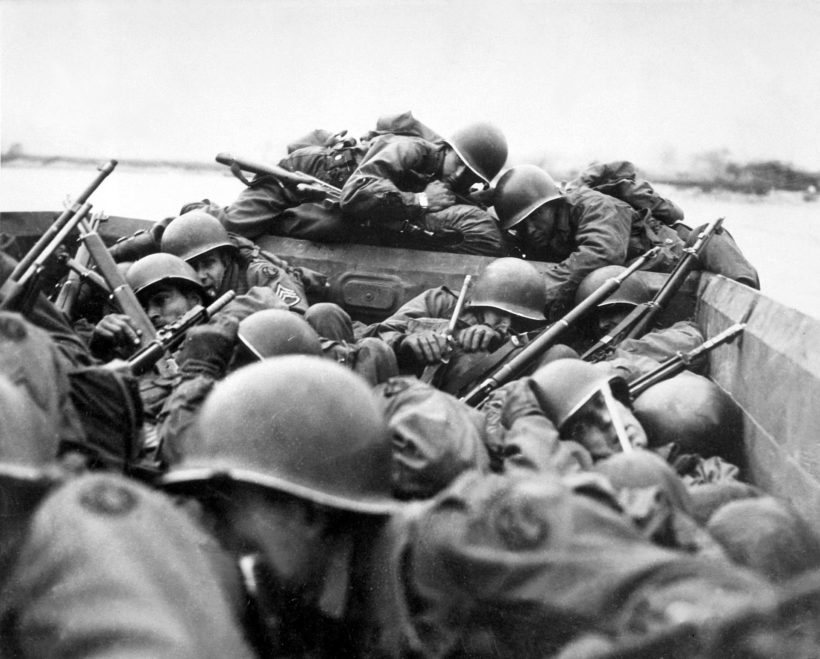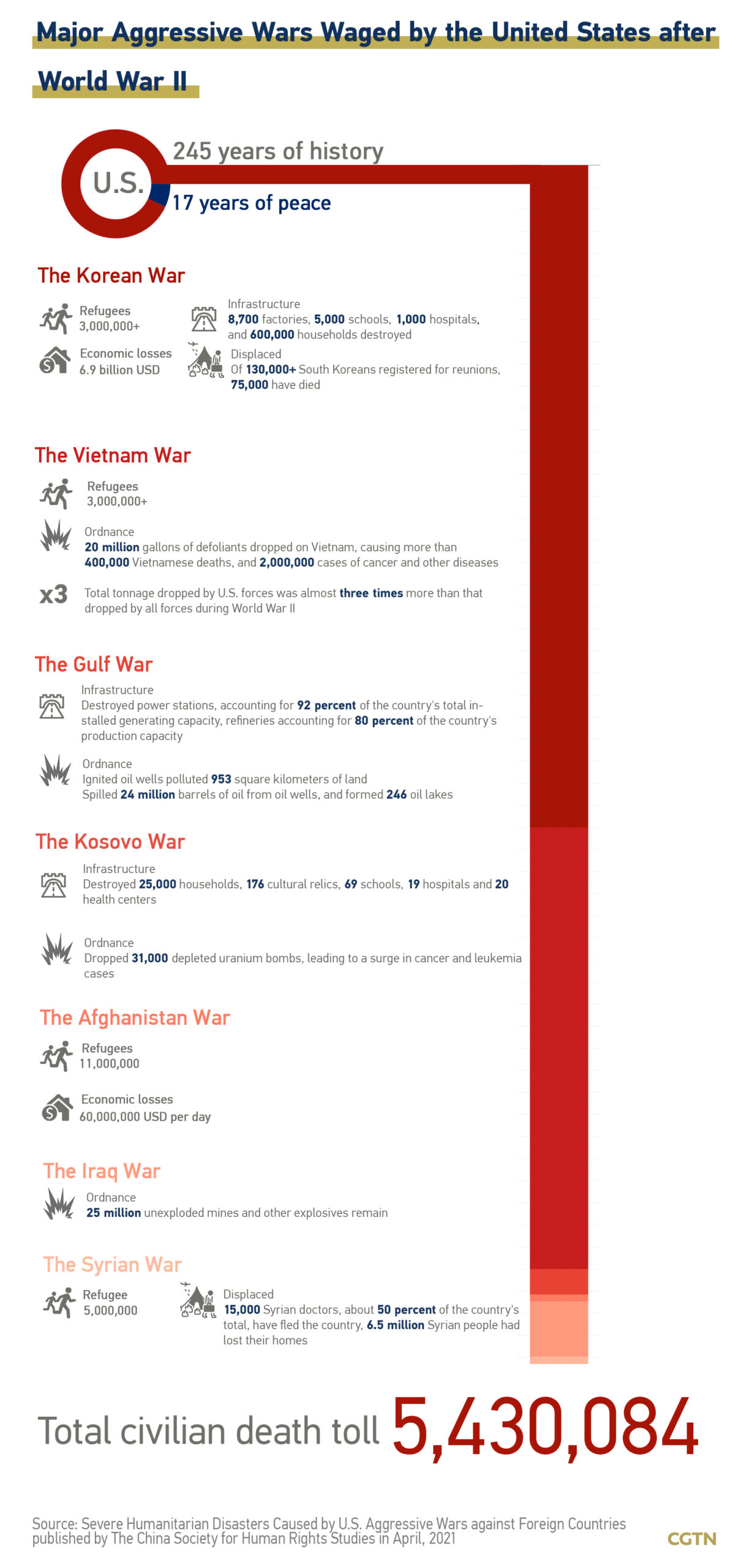Graphics: Major U.S. Military Operations since WW II
MILITARISM, 11 Oct 2021
CGTN China Global Television Network - TRANSCEND Media Service

(Image by US Army, Office of War Information (OWI)
– Department of Defense visual information (DVIC))
7 Oct 2021 –Two decades ago, on October 7, 2001, the onset of the U.S. bombing campaign against the Taliban triggered an endless nightmare for Arabs in general and the Afghan people in particular.
While combating al-Qaeda and the Taliban, the U.S. also caused a large number of unnecessary civilian casualties. U.S. troops caused the deaths of more than 30,000 civilians, injured more than 60,000, and created about 11 million refugees, according to the Severe Humanitarian Disasters Caused by U.S. Aggressive Wars against Foreign Countries published by The China Society for Human Rights Studies in April 2021.
After the U.S. military announced its withdrawal in 2014, Afghanistan continued to be in turmoil. In the first half of 2019, there were 363 confirmed deaths due to the U.S. bombs in Afghanistan, including 89 children, according to the New York Times. Scholars at Kabul University estimated that the Afghanistan War caused about 250 casualties and the loss of 60 million U.S. dollars per day.
Read more: The 20-year war in Afghanistan: What happened and what’s next?
Yet, this is only one of the aggressive wars the U.S. has waged after World War II. From 1945 to 2001, among the 248 armed conflicts that occurred in 153 regions of the world, 201 were initiated by the United States, accounting for 81 percent of the total number.
Apart from being directly involved in wars, the United States has intervened directly or indirectly in other countries’ affairs by supporting proxy wars, inciting anti-government insurgencies, carrying out assassinations, providing weapons and ammunition, and training anti-government armed forces, which have caused serious harm to the social stability and public security of the countries involved. As such activities are great in number and the full extent has not been made public, it is hard to collect specific data regarding all of them.
Tags: 9/11, 9/11 truth, Abu Ghraib, Afghanistan, Anglo America, Anti-imperialism, CIA, Central Asia, Drones, False flag, Geopolitics, Guantanamo, Hegemony, Human Rights, Imperialism, International Relations, NATO, Occupation, Pentagon, Rendition, State Terrorism, Taliban, Torture, US Military, US empire, USA, Violence, War Economy, War on Terror, Warfare
DISCLAIMER: The statements, views and opinions expressed in pieces republished here are solely those of the authors and do not necessarily represent those of TMS. In accordance with title 17 U.S.C. section 107, this material is distributed without profit to those who have expressed a prior interest in receiving the included information for research and educational purposes. TMS has no affiliation whatsoever with the originator of this article nor is TMS endorsed or sponsored by the originator. “GO TO ORIGINAL” links are provided as a convenience to our readers and allow for verification of authenticity. However, as originating pages are often updated by their originating host sites, the versions posted may not match the versions our readers view when clicking the “GO TO ORIGINAL” links. This site contains copyrighted material the use of which has not always been specifically authorized by the copyright owner. We are making such material available in our efforts to advance understanding of environmental, political, human rights, economic, democracy, scientific, and social justice issues, etc. We believe this constitutes a ‘fair use’ of any such copyrighted material as provided for in section 107 of the US Copyright Law. In accordance with Title 17 U.S.C. Section 107, the material on this site is distributed without profit to those who have expressed a prior interest in receiving the included information for research and educational purposes. For more information go to: http://www.law.cornell.edu/uscode/17/107.shtml. If you wish to use copyrighted material from this site for purposes of your own that go beyond ‘fair use’, you must obtain permission from the copyright owner.
As a student in St Andrews University, Scotland back in the 1960s, and as a member of the Policy Committee of the UK’s United Nations Association, I concluded that NATO was an aggressive (and not a defensive) institution, and that the greatest threat to World Peace was the United States of America. This was confirmed by my interpretations of the Vietnam War, of US military expenditure levels and by the policies of the Reagan era in South America, where “the U.S.A. never saw a military dictator they didn’t love.”
I try to promote peace and justice, hence my visceral and reasoned objections to George W. Bush’s incompetent and immoral Afghan and Iraq adventures. I am angry. Your excellent article proves me right for the past 50 years. Sadly.